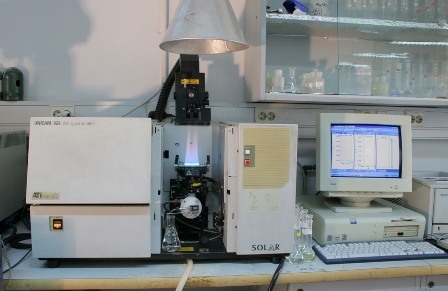Atomic Absorption Spectroscopy or AAS offers numerous career options to the analytical chemist. A need existed for testing the elemental composition of natural resources and of ancient herbal medicines since time immemorial. Today with a greater awareness on toxic and beneficial properties of elements the detection limits have been lowered by standard formulation bodies to levels not imagined ever before.
Industrial growth has increased the demand for new materials.Manufacturing processes critically require presence of elements within very narrow concentration ranges. Certain heavy metals like lead, cadmium and mercury are totally banned in foods and cosmetic products.
Consumer demands have given an impetus to development of new materials with desired mechanical, electrical and chemical characteristics. Such properties are influenced to a great extent by the chemical composition and concentration of elements. Such requirements place a demand on available analytical techniques for determination of an elemental composition of materials. The classical techniques were based on gravimetric and titrimetric methods and provided accurate results but were time-consuming. Modern industrial processes placed heavy demand on accuracy of analysis coupled with high analysis speeds. Such requirements are fulfilled by modern instrumental analysis methods such as AAS, ICP-OES and ICP – MS. Both ICP techniques offer several benefits besides higher sensitivity and speed of analysis. However, AAS meets the analysis requirements of both university and industrial laboratories and its affordable cost makes it a preferred choice. Further the choice between flame and graphite techniques makes analysis possible for a broad range of materials covering a wide range of concentrations.
The present article explores the potential areas where knowledge of AAS can provide substantial benefit to fresh entrants from Universities.
Environmental Monitoring
Increasing population and growth in industries has resulted in increased pollution of our natural resources. Metals in trace amounts find their way into water bodies, soils, plants and their concentrations can build up to harmful levels. Continuous monitoring of levels of elements in natural resources in the vicinity of industries and human settlements has become a necessity and AAS has made significant contributions in this area
Mining and Geology
Commercial mining operations are undertaken only after conducting analysis of rocks and minerals from the prospective sites. Besides mining the technique has also contributed to our knowledge on mineral composition, formation and weathering of rocks to help understand their evolution.
Gemology is another area of interest where the elemental composition of gemstones influences their optical characteristics.
Drinking Water
Pure drinking water is a basic necessity of humans. Besides drinking water is an important raw material for manufacture of food products, drinks and leverages. The quality of water is regulated by standard bodies across the world. Atomic Absorption Spectroscopy provides a viable analysis option for trace metal analysis to keep toxicity within acceptable limits. The application is further extended to study the leaching of metals by packaging materials.
Fuels
Presence of trace elements influences the burning characteristics of fuels. Many trace metals present in crude oils can act as catalyst poisons during refining operations
Analysis of wear metals is an important diagnostic tool to evaluate the useful life of engine component parts and helps make decisions on preventive maintenance and replacement of such worn out components
Agriculture
Key applications of AAS in agriculture cover analysis of trace metals in soils, fruits and vegetables, and leaves. Presence of heavy metals can be harmful to both humans and farm animals which consume agricultural produce
Pharmaceuticals and Herbal Medicines
Pharmaceutical formulations can contain traces of metals through contact with catalysts and manufacturing equipments. Certain noble metals are deliberately added to herbal health supplements and medicines. However, the elemental composition can be conveniently monitored with AAS technique
Toys
Toys seem to be harmless but can pose health hazards to small children as they can contain toxic elements such as Pb, Sb, As, Cd, Cr or Co. Lead compounds are added to PVC to act as stabilizers and other elements can be found in the colours used. Licking, chewing or swallowing can lead to toxic metal threat to infants.
AAS is a suitable technique for toxic studies on toys but due to vast differences in composition sampling needs to be done from different parts such as body, hair and dress material to estimate the levels of toxic metals
AAS is a well established technique which has potential applications in several areas touching our daily lives. The areas covered in the article are only illustrative. Knowledge of AAS can prove to be fruitful in virtually all activities as you cannot imagine any commodity which has not undergone quality control in its manufacturing stages.

